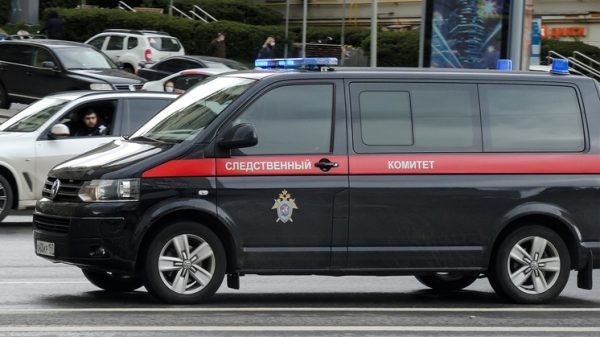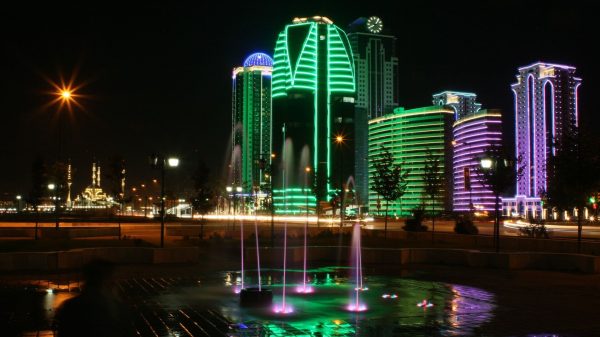
A veteran traffic officer, Pierluigi Marchionne, directs traffic from the mechanical pedestal in Piazza Venezia in Rome
Credit: New York Times
In a country where driving is at best erratic and at worst, positively suicidal, it may seem an unenviable occupation – directing traffic all day in one of the busiest piazzas in one of the most chaotic cities in Italy.
But Stefano Venditi loves his job as a traffic policeman in Piazza Venezia, a cross-roads at the heart of Rome which lies a stone’s throw from the Colosseum, the city’s Renaissance townhall, the 2,000-year-old Roman Forum and the Trevi Fountain.
“Look at my office – one of the most beautiful piazzas in the world,” he said.
On one side is a palazzo which was inhabited by the mother of Napoleon Bonaparte, on another the blood-red Palazzo Venezia, from where Mussolini harangued the crowds, and on another the huge Vittoriano, a dazzling white monument dedicated to Italy’s royals.

The pedestal is back in action after a year-long revamp of Piazza Venezia in the heart of Rome
Credit: Nick Squires
“I had to spend three years working in an office because of a back injury. I couldn’t wait to get back out here,” he said.
He is one of six officers from the Vigili – Rome’s municipal police force – who work in shifts directing the traffic from a drum-shaped pedestal in the middle of Rome’s most famous piazza.
The pedestal has been out of action for the last year due to a big revamp of Piazza Venezia. Gangs of workmen wrenched up and then re-laid tens of thousands of Rome’s distinctive basalt sampietrini cobbles.
The work is now finished, the piazza hums with traffic once again, and the pedestal is back in operation.

A scene from the 1960 Italian film Il Vigile, starring Alberto Sordi
Credit: Alamy
The officers don’t just direct the traffic, they orchestrate it, using their white gloved hands to conduct cars, buses and scooters with languorous waves.
“There’s theatre to it, a bit of choreography. We like to bring a little creativity to the job,” said Fabio Grillo, the head of the team.
He concedes that Italian drivers tend to be a little chaotic. “For them, it’s always a race, they are always in a hurry. They’re distracted – smoking a cigarette or sending a text message.”
Asked why Italian motorists drive bumper to bumper, leaving no room for error, he said: “We’re Latins. Even when we drive we like to stick close together. From Rome down to the south of Italy the style of driving is a bit, let’s say, sporty. Frenetic.”

Traffic in Piazza Venezia is diminished as a result of the pandemic and Italy's latest lockdown but still needs to be managed
Credit: Nick Squires
It is only since 2006 that the little platform has had the capacity to move up and down. Before that, it was a fixed feature made of cement, like a mini bandstand. “It was poorly lit at night and cars kept smashing into it,” said officer Grillo.
It rises up and down at the flick of a switch, which is concealed in a grey plastic box outside a bar on the edge of the piazza.
First established in the 1920s, the pedestal is the last of its kind in Italy – there used to be dozens in towns and cities around the country but they have been replaced by traffic lights.
The pedestals and the officers who manned them were a fixture of Italian films in the post-war period, most famously a 1960 classic called Il Vigile or The Traffic Policeman, starring one of Italy’s favourite actors, Alberto Sordi.
More recently, the pedestal in Piazza Venezia, along with a traffic officer called Pierluigi Marchionne, formed the opening scene of Woody Allen’s 2012 comedy To Rome With Love, starring Allen, Alec Baldwin and Penelope Cruz.
Until now, the traffic police in Piazza Venezia have been men, but this week the first female officer joined their ranks.

A team of half a dozen dedicated officers direct the traffic in Piazza Venezia in the centre of Rome
Credit: Nick Squires
“Up on the platform you really feel as though you are at the heart of Rome,” said Cristina Corbucci as she embarked on her new role.
As officers Grillo and Venditi finished their shift and the pedestal slid back into the ground, lying flush with the cobbles, passersby got out their phones and snapped photos.
“I love it,” said Sandu Ioan, a construction worker taking time off from the restoration of a nearby palazzo. “It’s an icon of Rome. Let’s hope they never get rid of it.”



















































Свежие комментарии